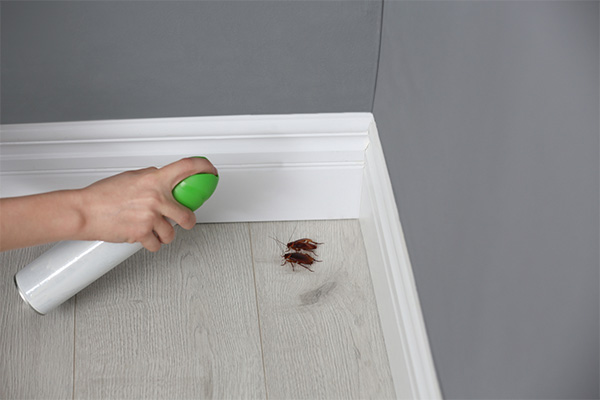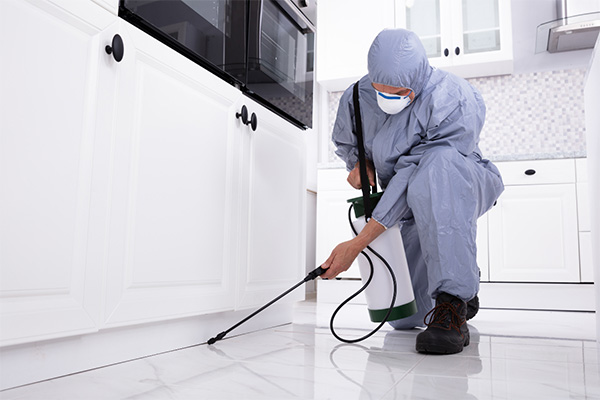Addressing a cockroach infestation in your residence can be a distressing and formidable task. Cockroaches are not only unattractive but also present significant health hazards, as they are carriers of various pathogens and can exacerbate allergies and asthma. The presence of these persistent pests can quickly turn your comfortable living space into a source of stress and concern. Nevertheless, there is positive news! Successfully eliminating roaches is entirely feasible with the right approach.
In this blog post, we will delve into effective strategies and proven methods to assist you in reclaiming your home from these unwelcome invaders. Whether you're facing a mild infestation or a full-blown roach takeover, our comprehensive guide will provide the knowledge and tools you need to eliminate and prevent roaches from returning.
Types Of Roaches
When it comes to household roach infestations, several common types of cockroaches are often found lurking in homes. Each type possesses distinctive characteristics and behaviors, influencing the effective control and elimination approach. Here are some of the most prevalent types of roaches that you might come across at home:
German Cockroaches
The German cockroach is one of the most widespread and troublesome species discovered in households. They are relatively small, usually measuring around half an inch in length, and sport a light brown color with two dark stripes on their back. Renowned for their quick reproduction, German cockroaches tend to inhabit kitchens, bathrooms, and other areas with food and moisture.
American Cockroach
Also recognized as the "palmetto bug," the American cockroach ranks among the larger species frequently encountered in residences, measuring approximately 1.5 to 2 inches long. Sporting reddish-brown, they exhibit a distinct yellowish figure-8 pattern on the back of their heads. American cockroaches favor warm and moist settings, commonly inhabiting basements, sewers, and areas around pipes and drains.
Oriental Cockroach
Oriental cockroaches, commonly called "water bugs," are dark brown or black and typically measure about an inch in length. Flourishing in cool, damp environments, they are frequently encountered in basements, crawl spaces, and around drains. Unlike some other species, Oriental cockroaches are less adept climbers and are more commonly found on lower levels of buildings.
Brown-Banded Cockroach
The brown-banded cockroach is smaller, measuring around half an inch in length, and features a light brown color with distinctive lighter bands across its wings. Unlike other species that prefer moist environments, brown-banded cockroaches tend to inhabit drier areas. They are often found in higher locations within a home, such as in cabinets, closets, and behind picture frames.
Each of these roach species has its own preferred habitats and behaviors, which can influence the methods used for control and prevention. Understanding the specific type of roach infesting your home is a crucial step in developing an effective plan to eliminate them and keep them from returning.

How To Get Rid Of Roaches
Use Bait Stations and Gel Baits
Bait stations and gel baits are effective tools in controlling roach populations. Position bait stations in areas where roach activity has been detected, including under sinks, behind appliances, and in dark, secluded corners. When applying gel baits, use small amounts near roach harborage areas, ensuring not to over apply, as excessive amounts can deter roaches. These bait stations incorporate a slow-acting poison that roaches eat and subsequently carry back to their nest, contributing to the gradual eradication of the colony.
Insecticide Sprays and Dust
Insecticide sprays and dusts can be used to target areas where roaches are known to hide. Sprays should be applied in cracks and crevices rather than on open surfaces, especially where food is prepared. Insecticide dusts, such as diatomaceous earth, are effective in areas that are out of reach for children and pets, like behind appliances and inside wall voids. These products can help reduce roach populations by directly killing roaches that come into contact with them.
Boric Acid
Boric acid stands as a low-toxicity choice for controlling roaches. It is best applied as a fine powder in areas where roaches are prone to crawl, such as under refrigerators, stoves, and sinks. However, it's important to note that boric acid only kill adult roaches and does not affect their eggs. It's best to use boric acid with another option to get rid of roaches long-term. Exercise caution when applying boric acid, as it can pose a risk if ingested by pets or children. It works by sticking to the roach's body, which is then ingested when the roach grooms itself, leading to its death.
Roach Traps
Sticky traps can be used to both reduce roach populations and monitor the level of infestation. Place these traps strategically where roaches are likely to travel, such as along walls, under sinks, and in dark corners. Regularly check and replace the traps to assess the effectiveness of your control efforts and determine if further action is needed.
Baking Soda
Using baking soda to kill roaches is a popular, cost-effective, and non-toxic method for homeowners seeking a DIY solution. The approach involves mixing equal parts baking soda and a sweet attractant, such as sugar, to lure roaches. The sugar will entice the roach to ingest the baking soda mixture. When the roach ingests baking soda, it reacts with the acid in their stomachs, inducing internal distress and ultimately resulting in their demise. To implement this method, sprinkle the mixture in areas where roach activity is prevalent, such as under sinks, along baseboards, and behind appliances. It's a safe alternative for households with pets and children, but patience and repeated applications may be necessary for effectiveness.
Diatomaceous Earth
Diatomaceous Earth (DE) is a potent and natural approach to roach elimination. Formed from the fossilized remains of minuscule aquatic organisms, DE functions by dehydrating roaches upon contact. Its microscopic sharp edges penetrate the roach's exoskeleton, leading to moisture loss and eventual demise. To apply DE, lightly dust areas frequented by roaches, such as under appliances, baseboards, and cabinets. It is essential to use food-grade DE for safety, particularly in households with pets and children. DE is non-toxic and environmentally friendly, but it requires time to work and should be part of an integrated pest management strategy.
Use insect growth regulators
Insect Growth Regulators (IGRs) are an innovative and highly effective way to control roach populations. IGRs disrupt the normal development of roaches, inhibiting them from reaching maturity and reproducing. They mimic hormones in young roaches, causing abnormalities in their growth and development, leading to a gradual decline in their population. IGRs are accessible in various forms, including sprays, baits, and concentrates. When used in areas where roaches are active, IGRs offer a long-term solution by targeting the roach lifecycle. They are particularly useful in comprehensive pest management programs, as they are low in toxicity and pose minimal risk to humans and pets.

Tips To Get Rid of Roaches
Professional Pest Control
Professional pest control services can provide a comprehensive solution in cases of severe infestation or when home remedies are ineffective. Professional exterminators possess the expertise to identify the particular roach species infesting your home and can customize a treatment plan accordingly. They have access to stronger pesticides and can implement effective pest management strategies for long-term control.
Regular Monitoring and Maintenance
Even after successfully managing a roach infestation, it is crucial to continue monitoring your home for signs of roach activity, such as droppings or egg cases. Maintaining cleanliness and sanitation practices is essential to prevent roaches from returning. Periodically repeating treatments, such as baiting and sealing entry points, can help manage any new roaches that may enter your home in the future.
Seal Entry Points
Avoiding roaches from infiltrating your home is a pivotal measure in managing infestations. Inspect your residence's exterior for cracks or openings in the foundation, walls, and around windows and doors. Seal these gaps using caulk or other appropriate materials to hinder their entry. Installing door sweeps on exterior doors can help close gaps underneath that roaches might use to enter. Take notice of areas where utility pipes and cables enter your home, and ensure that any gaps around them are sealed.
Clean and Sanitize
Maintaining cleanliness is fundamental in the battle against roaches. This involves sweeping and vacuuming floors regularly to remove crumbs and food particles that attract roaches. To eliminate food residues and spills, kitchen surfaces, and counters should be wiped down after every use. Appliances like stoves, microwaves, and toasters often accumulate food particles and should be cleaned regularly. Refrain from leaving dirty dishes in the sink overnight, which can be a significant attractant for roaches. A clean and tidy environment will significantly reduce the food sources that roaches rely on to survive.
Eliminate Water Sources
Roaches depend on water for survival, so cutting off their access to it is crucial. Check your home for minor plumbing leaks, no matter how minor they are, and repair them promptly. This includes areas under sinks, around toilets, and any damp spots in the basement. Employing a dehumidifier in areas with high humidity can assist in reducing moisture levels. Be mindful of pet water dishes and avoid leaving them out overnight. Fix any dripping taps or shower heads, as even small water droplets can provide a water source for roaches.
Store food properly
Properly storing food (including pet food) is crucial in keeping roaches away. Ensure all food items, particularly grains, cereals, and sweets, are stored in airtight containers. Avoid leaving open packages in cupboards or counters, as the smell attracts roaches. Regularly check and clean storage areas to remove any crumbs or spilled food, which can serve as a food source for these pests.
